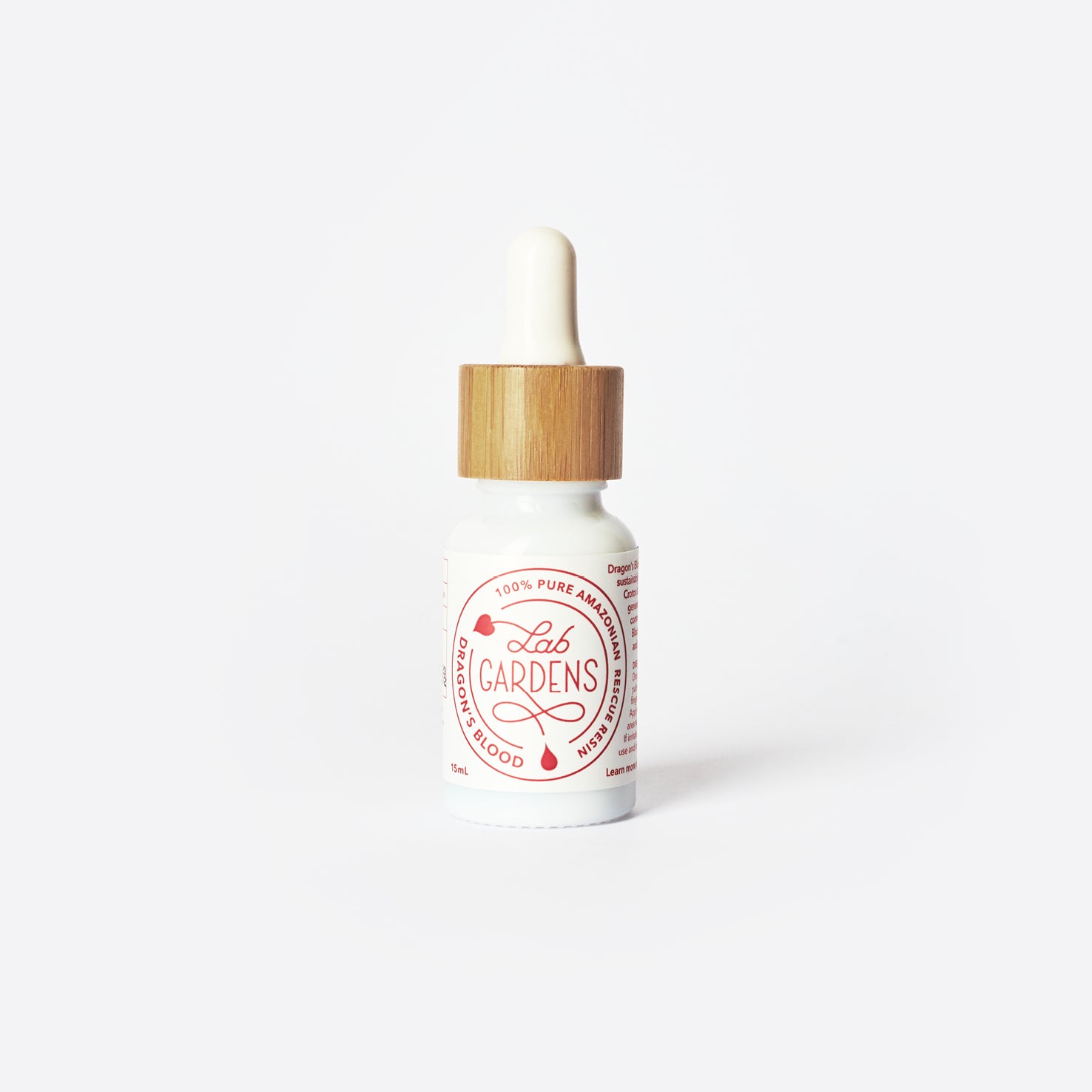What is Dragon’s Blood?
Lab Garden’s Dragon’s Blood is the liquid resin from the South American Croton Lechleri tree. Our trees grow in the Peruvian Amazon in the Loreto region. In Spanish, the resin is called Sangre de Grado or Sangre de Drago.
Pure and Authentic.
Our Dragon’s Blood is 100% pure and wildcrafted with no additives or carriers. We filter and bottle it straight from the tree we don’t put anything else in, and we don’t take anything out. Because we don’t interfere with mother nature, there might be slight variations in colour or viscosity from harvest to harvest. The resin is harvested from the tree by scoring the bark and collecting the resin in controlled amounts. The resin seals the cut in the tree allowing it to live a long and healthy life making it the perfect tree to combat global warming.
Traditional Indigenous use
Dragon’s Blood is widely dispersed throughout the jungle and native people score the tree with a machete and apply it directly to the wound site. For generations, indigenous Amazonian communities have counted on Dragon’s Blood to treat cuts, burns, herpes, haemorrhoids, blisters, mouth ulcers, fungal conditions, insect bites, rashes, warts, skin cancer, eczema, dermatitis, and much more. Dragon’s Blood is essential in the native pharmacopoeia to treat vaginal infections and healing after childbirth as well as internal conditions including diarrhea, irritable bowel syndrome, and stomach ulcers. In the jungle, Dragon’s Blood is the ultimate first aid kit.
Why whole plant?
The whole plant does more than its individual parts.
A whole plant has a vital array of phytochemicals that work in a synergistic way. That means that one part of the plant might have antibacterial properties, another might rebuild collagen in the skin and yet another provides pain relief. Together, these three properties synergistically amount to vastly improved skin healing.
Big pharma usually makes their money from isolating specific chemicals in plants, compounding them into medicines, patenting the formula and selling them for outrageous prices. Big pharmaceutical companies steal indigenous plant knowledge, exploit the environment and make people dependent. Isolates are less effective as well.
You can’t patent a whole plant. It doesn’t belong to anyone but itself. Just like you can’t patent an animal or a person. Lab Gardens believes the sale of whole plant products empowers forest communities. They benefit directly from their inherited wisdom, that knowledge is passed on to the next generation, families can stay on country and… more trees get planted! Whole plant promotes whole healing
Plant Chemical Data
Sangre de grado resin or sap is a storehouse of phytochemicals, including proanthocyanidins (antioxidants), simple phenols, diterpenes, phytosterols, and biologically active alkaloids and lignans. Scientists have attributed many of the biologically active properties of the sap (especially its wound-healing capacity) to two main “active” constituents: an alkaloid named taspine,and a lignan named dimethylcedrusine. But scientific testing has shown the whole plant to be more effective than its individual parts.
Noted author and ex-USDA economic botanist Dr. James Duke summed it up:
Regarding Dragon’s Blood: in addition to the proanthocyanadins (including Pycnogenol) and taspines, there’s another active ingredient—dimethylcedrusine. While each of these alone—dimethylcedrusine, Pycnogenol and taspine—was shown to effectively heal wounded rats (with squares of skin exfoliated, i.e., peeled off) by European scientists, the whole dragon’s blood was shown to speed healing four times faster. The whole was better than the sum of its parts. Synergy makes the whole herb stronger; diversity makes the rainforest stronger.1
Research
Please visit dragonsbloodgrowers.org. It's a fantastic resource for usage and clinical tests from all over the world.
Lab Garden's Dragon's Blood is 100% Pure liquid resin harvested from the amazonian Croton Lechleri tree. Used for generations in Amazonian indigenous communities, Dragon's Blood holistically soothes and protects the skin.
Directions: Drop a small amount into palm and mix with your finger until colour lightens. Apply topically to affected area two to three times per day or as needed. If irritation occurs, discontinue use and consult a doctor.






